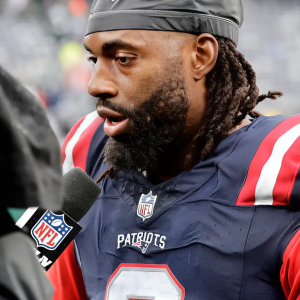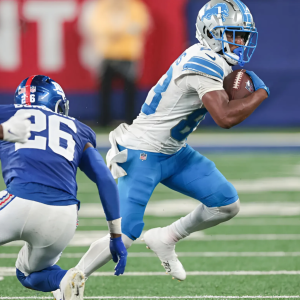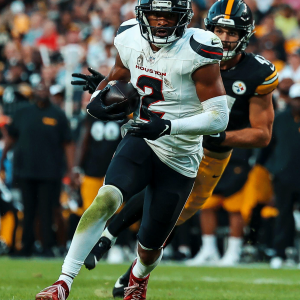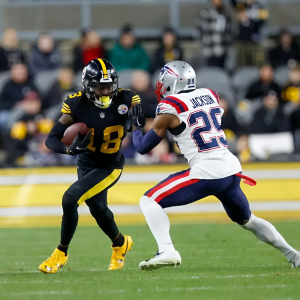FLOWERY BRANCH, Ga. — When first-year Atlanta Falcons head coach Raheem Morris addressed reporters March 26 for the first time since the team chose to keep quarterback Taylor Heinicke on the roster, he spoke with a level of confidence reflecting clear affinity.
“I don’t want to limit him to what he can be, but he has shown he’s been an elite backup in this league,” Morris said at the NFL owners meetings. “You’re talking about a guy who can come into the game and win you the game until your starter gets back, then, boom, not miss a beat.”
But approximately one month later, the Falcons drafted quarterback Michael Penix Jr. at No. 8 overall, and Heinicke’s outlook hasn’t been the same since.
Atlanta is attempting to develop Penix during training camp, thus giving him all of the snaps with the second-team offense. Morris said before the first practice of camp that Heinicke and Penix would split reps, but that hasn’t been the case thus far.
Granted, when the Falcons split into two fields, Heinicke continues to work with the first- and second-string players as the No. 2 quarterback behind Kirk Cousins. Yet when Atlanta does 11-on-11 periods, Cousins and Penix are the only two signal callers who see the field.
Heinicke has taken snaps in the Falcons’ two open practices — July 27 at Seckinger High School in the “young players period” with reserves and Aug. 2 at Mercedes-Benz Stadium in the final session after Cousins and Penix had completed their work. Apart from that, he hasn’t received much competitive work.
And after the session at Seckinger, Heinicke said he understands the position he’s in.
“I kind of see the writing on the wall,” Heinicke said. “It’s nothing I haven’t been through before. So, I accept my role in any case. My role, for me, and what I think is to help Kirk any way that I can if he has any questions. Same thing with Mike. Sometimes the game is fast — sometimes everything is fast for rookies.
“So, I’m going to make sure that I’m on top of my stuff so that when (Cousins) does have that question, I can give him the right answer to kind of help him through it.”
The 31-year-old Heinicke noted he experienced similar situations with the Minnesota Vikings and Carolina Panthers in earlier stages of his career. He was waived by both teams, but in each occurrence, he’s learned to focus on things he can control, such as being a good teammate and person.
“When I come in the building, I’m going to be a great teammate,” Heinicke said. “I’m going to do everything I can to be on this team and help them in every way that I can. That’s my role. I gladly accept that. I’m trying to be the best at that.”
Heinicke played in five games with four starts for the Falcons last season, completing 54.4 percent of his passes for 890 yards, five touchdowns and four interceptions. The team went 1-3 in his starts.
Atlanta had a decision to make on Heinicke this spring. If it released him before the fifth day of the new league year, it would have created upward of $7 million in cap space. Instead, the Falcons retained Heinicke but with a restructured deal, cutting his $9 million cap hit in half to $4.5 million.
The move allowed Heinicke the right to stick around — but now, the Lawrenceville, Ga., native’s hopes of staying with his local team appear to be dwindling.
The Falcons made another move in their quarterback room last Thursday, releasing undrafted rookie John Paddock in favor of Canadian Football League star Nathan Rourke, who has spent time on practice squads with the Jacksonville Jaguars, New England Patriots and New York Giants.
Why would the Falcons, in early August after three months of continuity in the quarterback room and with the preseason looming, make the move if they didn’t feel it was relevant for their seasonal outlook?
After all, if they were planning on keeping Heinicke, why swap No. 4 quarterbacks for a three-week preseason stretch?
Before the practice at Mercedes-Benz Stadium, Morris praised Atlanta’s personnel staff — general manager Terry Fontenot, assistant general manager Kyle Smith and director of player personnel Ryan Pace, among several others — for the work done to round out the bottom of the roster.
Further, Morris praised Rourke — and the Falcons are eager to see if he can be a solution as a younger, cheaper third quarterback than Heinicke.
“Rourke was very high on our list and a guy we wanted to see and have a chance to get some action,” Morris said. “We got a chance to work him out. We wanted to sign him, maybe get a chance to see a little bit more of him. We were really excited about even some of the guys we got rid of, like Paddock.”
The Falcons have until Aug. 27 to make a decision on Heinicke and the rest of the players currently on their 90-man roster. If they trade or release the veteran signal caller, they’ll save $1.2 million in cap space while incurring $3.2 million in dead money, according to OverTheCap.
With Cousins serving as Penix’s mentor and the Falcons maximizing practice snaps for their future franchise quarterback, Heinicke may not have a place in Atlanta’s room. And from Heinicke’s perspective, the lack of reps and opportunity is far from ideal for a player who has built his brand as a competitor.
Heinicke is entering the last year of a two-year, $14 million contract he signed in the spring of 2023. But that was Atlanta’s previous staff, and Morris and the group appear to have different plans.
And so, Heinicke’s stint with his home team seems unlikely to have a Hollywood ending — but now, the question becomes how long the final scene lasts.






